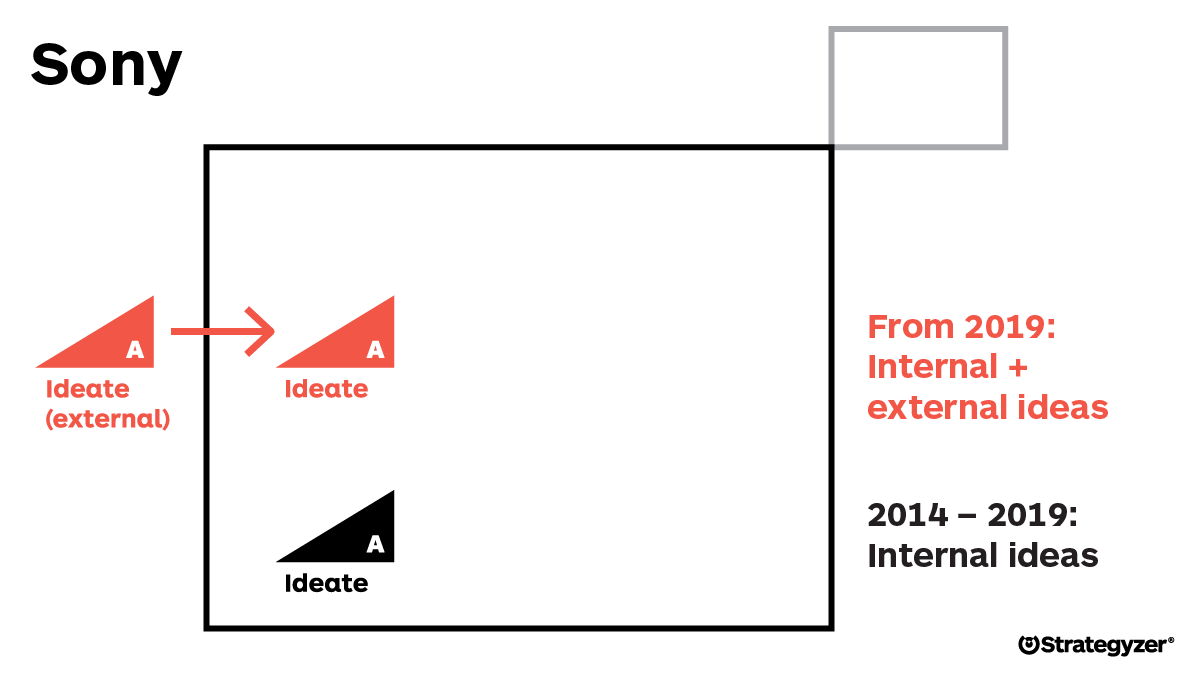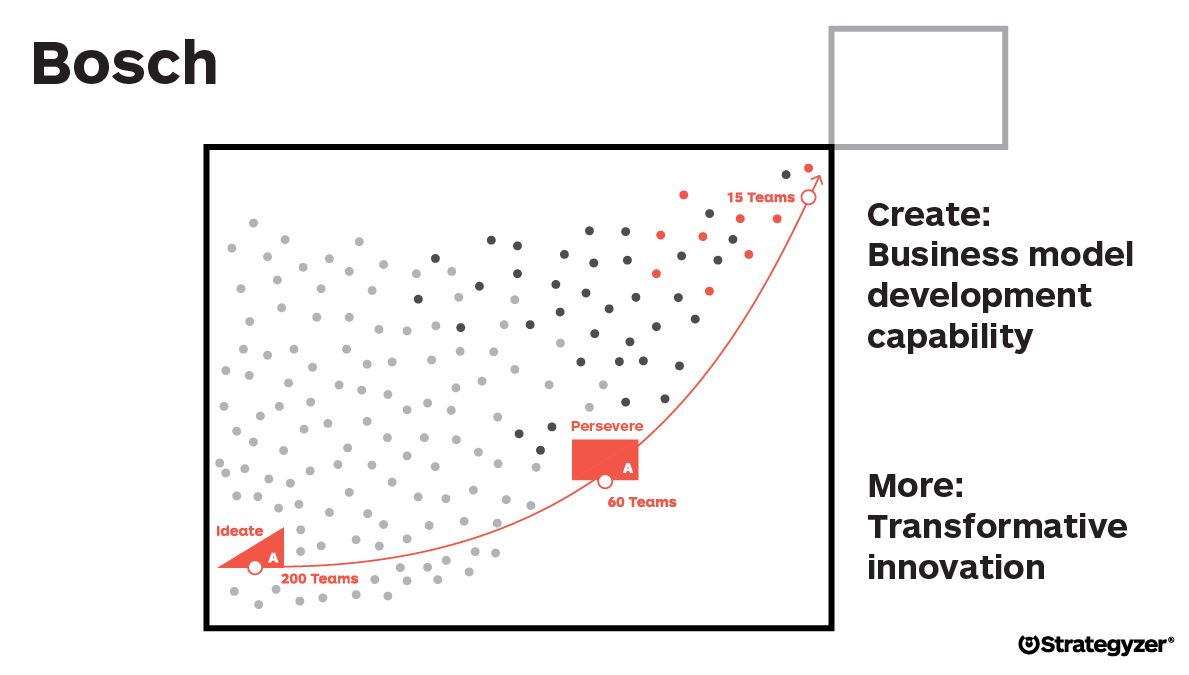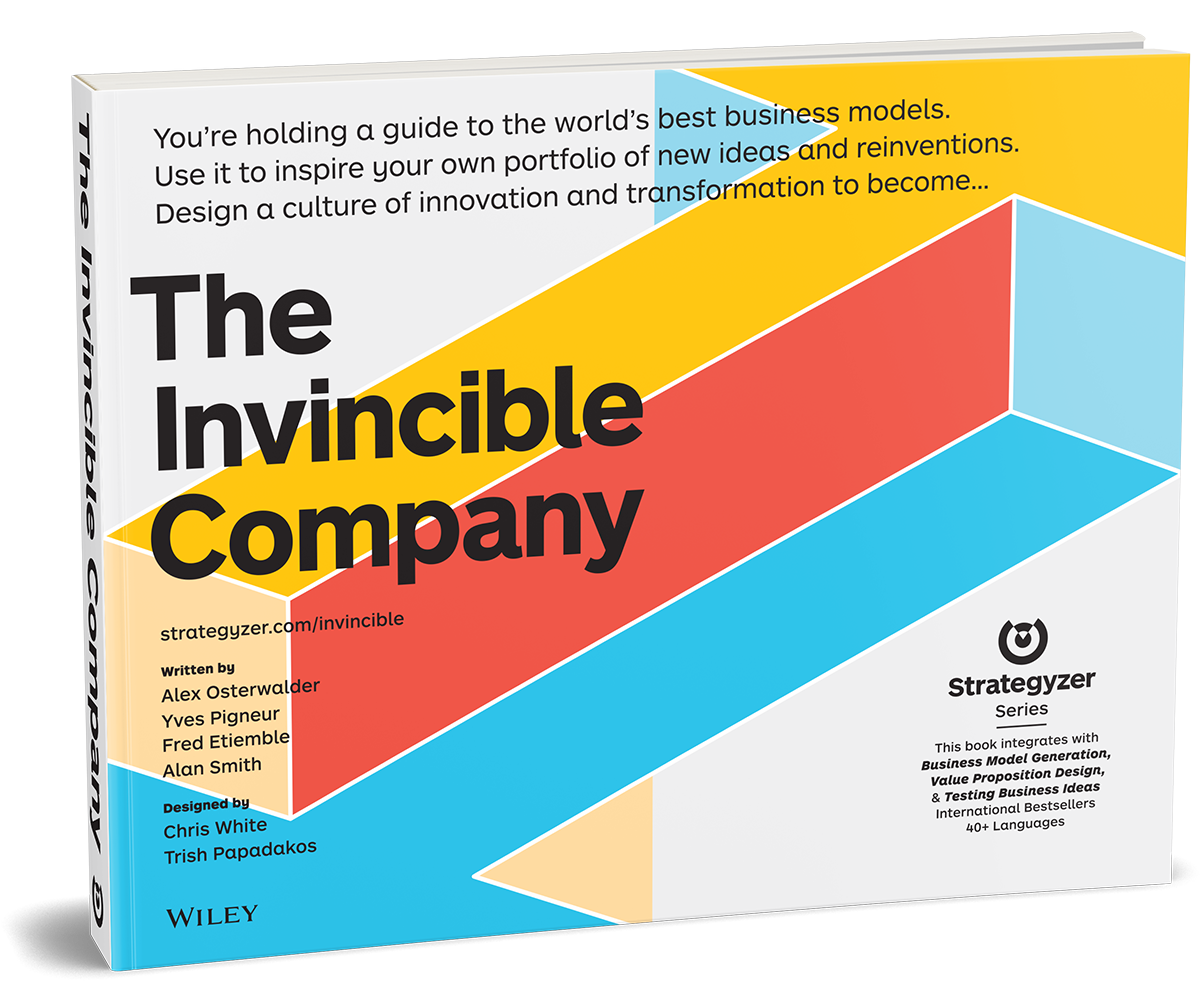Align your Innovation Ecosystem Stakeholders with Clear Explore Guidance
In a recent post we explained how to align innovation projects with corporate strategy using the Strategic Guidance framework. Today I zoom in on Explore Guidance, a key element from your overall Strategic Guidance to align your innovation ecosystem stakeholders.
Definition of Explore Guidance
Explore Guidance is a subset of your overall strategic guidance. Explore Guidance facilitates resource allocation and actions in the Explore portfolio. It provides explicit boundaries to understand what to explore and what not to explore.
Why Explore guidance?
For corporate innovation leaders it is both costly and risky to “let a thousand flowers bloom” when trying to deliver innovation outcomes. In the absence of Explore guidance it is highly unlikely that innovation initiatives will magically align with strategic goals, which could lead to disappointing outcomes at high costs. For example, a recent corporate client ran a successful soft launch of a new product only to pull the plug afterwards because it was not strategically aligned with the company.
That’s why corporate innovation leaders should document explicit Explore guidance to provide clarity on how the various initiatives in the Explore portfolio should contribute to the strategic goals of their organization.
Explore guidance will be critical to:
Help everyone in the organization understand where the organization is going and which future related topics matter most,
Make scope and boundaries clear in terms of what's "in" and what's "out" of Explore portfolio,
Clarify all criteria or prerequisites to be met for a project to enter the Explore portfolio,
Give innovation stakeholders and decision-makers clear guidance on which opportunities to pursue or to kill,
Make investment decisions easier.
Ping An Insurance Company of China, Ltd., was founded in 1988 by Peter Ma. By 2007 it was China’s second largest insurance provider. In 2008, Peter Ma started Ping An’s transformation from a financial institution to a technology company. Strategically, Peter Ma wanted Ping An to transcend its industry boundaries to be more than just an insurance company. Ping An’s resulting Explore Guidance was to explore new business ideas in five distinct arenas beyond banking and insurance: finance, healthcare, auto services, real estate, and smart-city.
Who is your Explore guidance for?
The Explore guidance should be communicated to all stakeholders contributing to the innovation ecosystem. It helps them understand and “self-assess” if their desired contribution could meet those prerequisites.
Your guidance is targeted first at internal stakeholders:
Employees who are part of innovation projects, wish to contribute to new idea generation campaigns, or apply to intrapreneurship programs aimed at supporting the journey from idea to new business,
Leaders of Business Units or Functions who may also contribute to new idea generation, or be part of the selection of ideas and teams for innovation programs, or even invest their budget and resources to various innovation initiatives.
Your guidance should also be shareable with external stakeholders:
External experts (e.g. Venture Capitalists, Academics, Subject Matter Experts, etc.) who might play a role in your innovation process and be part of your innovation programs,
External startups that might apply for Corporate Venture Capital investment, join your incubator, or apply to receive any other type of support you may provide.
Established in 2014 and led by Shinji Odashima, Sony Startup Accelerator Program (SSAP) is an internal innovation program for Sony employees to ideate, commercialize, and scale business ideas that live outside of Sony’s traditional business units. After five years focusing on internal innovation stakeholders, Sony changes its Explore guidance in 2019 to being open externally, helping anyone incubate their idea. This is because SSAP sees innovation as a numbers game. Based on their previous experience they knew the chance of success for any idea was very small (1.85%). Consequently, they changed their Explore guidance to allow more ideas in their accelerator program, in order to increase the number of successes.
What should your Explore guidance cover?
The Explore guidance should make expectations of corporate innovation leaders explicit by answering a few simple questions.
What type of innovation are you after?
Be it:
efficiency innovation,
sustaining innovation,
transformative innovation,
or a particular combination of the above types of innovation.
What is the expected return from a project in the Explore portfolio?
Be it in terms of:
future annual revenues,
captured market size,
cost savings, etc.
Be careful here. That doesn’t mean that all projects entering the Explore portfolio are expected to succeed: the exploration of transformative ideas in high uncertainty environments requires accepting to “kill” the vast majority of ideas along the way. And the upfront clarification of this expected return should contribute to making investment decisions at different steps of your innovation process a lot more transparent.
What are the exploration boundaries?
Be it in terms of:
existing business areas (in large organizations),
product categories,
countries and regions in scope,
as well as brand new opportunity areas you wish to explore, etc.
What key resources and capabilities do you hope to develop?
Be it the:
mastery of a new technology (e.g. AI, data analytics),
development of a new business model building block (e.g. a Direct to Consumer channel in a traditionally B2B company)
In 2014, Bosch’s CEO, Volkmar Denner, sent out a communication to spur business model innovation. Explore guidance made explicit the type of innovation (transformative) and new capabilities (business model development capabilities) to be developed. Indeed Bosch needed to maintain its technology and product focus but simultaneously turn more of its attention to new types of business models. In 2015, Bosch created the Business Model Innovation Department to develop an ecosystem dedicated to exploring, nurturing, and facilitating growth innovation, moving beyond product innovation.
In conclusion...
When they pause to answer those simple questions, corporate innovation leaders will already achieve 80% of the work required to align the various stakeholders of their innovation ecosystem. And they will also avoid the costly mistake of letting the wrong projects into the Explore portfolio. Projects that would consume time, energy, money and some of their trust capital on explorations that are not aligned with the true strategic objectives.
Learn more in our latest book The Invincible Company
Note: an earlier version of this post was originally published on the Strategyzer blog









